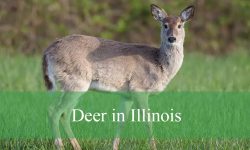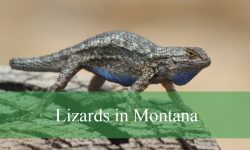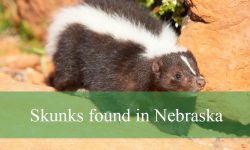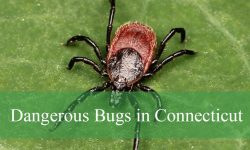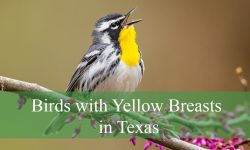Ladybugs are some of the most helpful and colorful insects found across California. They live in gardens, forests, and farmlands, feeding on pests that harm plants. Each species has its own unique color, size, and pattern, making them easy to spot once you know what to look for.
These small beetles are nature’s pest controllers, eating aphids and other soft-bodied insects. Some are bright red with black spots, while others are yellow, gray, or spotless. Learning to identify them helps gardeners understand which species are active in their area.
California is home to many native and introduced ladybug species that keep ecosystems balanced. From the common Convergent Lady Beetle to the striking Twice-Stabbed Lady Beetle, each plays an important role in maintaining healthy plants and crops.
Different Types of Ladybugs Found in California
Convergent Lady Beetle (Hippodamia convergens)
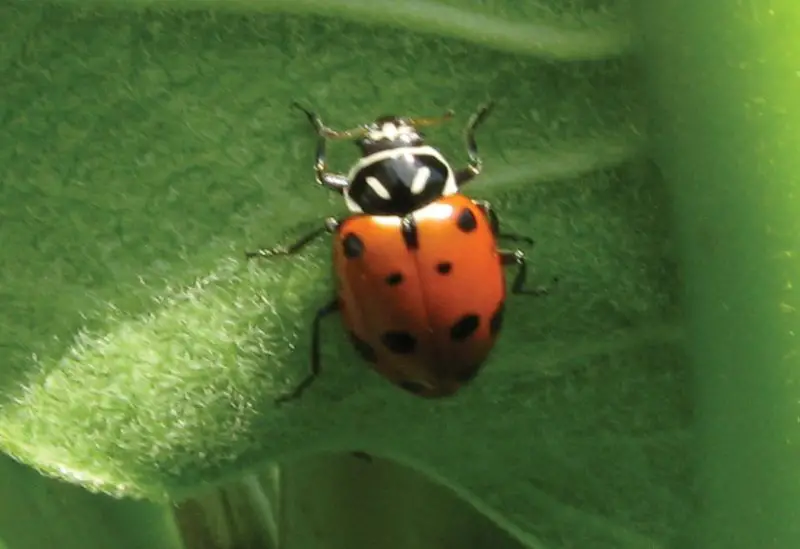
The Convergent Lady Beetle is one of the most common and beneficial ladybugs in California. It is easily recognized by its bright orange-red body and thirteen small black spots on its elytra. The name “convergent” comes from the two small white lines that converge behind its head, forming a distinct pattern. Adults typically measure about 4 to 7 millimeters in length and have a dome-shaped, glossy shell that provides protection from predators.
This ladybug species thrives in a variety of habitats, including gardens, fields, orchards, and meadows. It is especially abundant in agricultural regions where aphid populations are high. During colder months, large groups of Convergent Lady Beetles can be found clustering together under leaves, in tree bark crevices, or even in man-made structures to overwinter. Their ability to tolerate a wide range of temperatures makes them well-adapted to California’s climate.
Convergent Lady Beetles are voracious predators of soft-bodied insects, especially aphids, scale insects, and whiteflies. Both larvae and adults feed on pests, making them a vital part of natural pest control in crops and gardens. They are harmless to humans and non-toxic to pets, making them one of the most beneficial insects in the ecosystem.
Seven-Spotted Lady Beetle (Coccinella septempunctata)
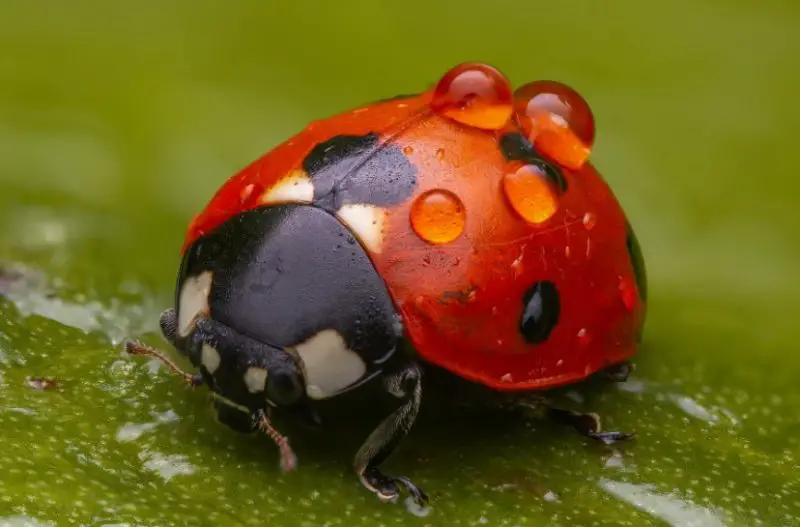
The Seven-Spotted Lady Beetle is a familiar species across California, known for its striking red-orange wings marked by seven black spots—three on each wing cover and one in the center. Its head and pronotum are black with white patches near the eyes, giving it a sharp and clean appearance. Adults range from 7 to 10 millimeters in length, making them slightly larger than many native ladybugs.
This species prefers open habitats such as grasslands, gardens, and agricultural fields, where it can easily find aphid colonies. It was introduced to North America from Europe for biological control and quickly became one of the most common ladybugs in the western United States. The Seven-Spotted Lady Beetle is active from spring to late fall, and during the winter, it seeks shelter in leaf litter or under bark to survive cold temperatures.
As an aggressive predator, it feeds primarily on aphids, but it also consumes mites and other small soft-bodied insects. Its presence helps reduce pest populations naturally, benefiting farmers and gardeners alike. The Seven-Spotted Lady Beetle is non-toxic to humans and is considered a valuable ally in integrated pest management systems.
Asian Lady Beetle (Harmonia axyridis)
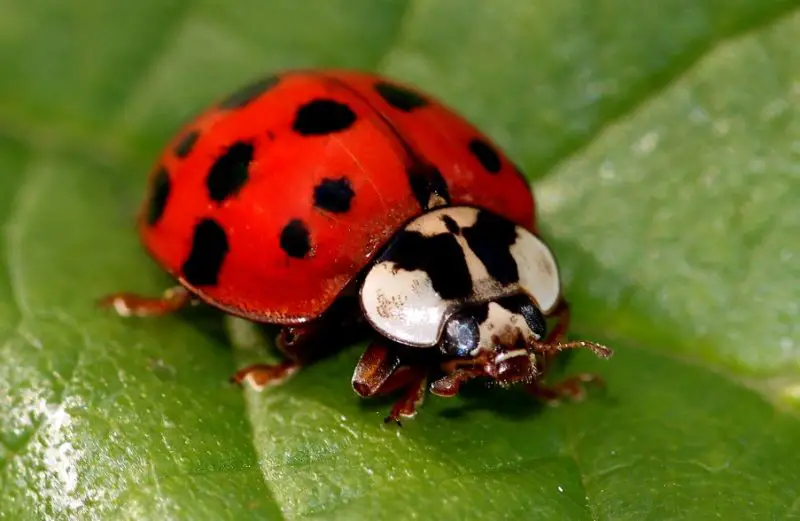
The Asian Lady Beetle is a variable species known for its wide range of colors and spot patterns. It can appear red, orange, or yellow with zero to nineteen black spots on its elytra. A key identifying feature is the black “M”-shaped marking on its pronotum, just behind the head. Adults are typically larger than most native species, measuring 6 to 8 millimeters in length.
Native to East Asia, this species was introduced to California to control aphids and scale insects in agricultural crops. It adapts easily to various environments, from urban gardens to forests and vineyards. In autumn, Asian Lady Beetles often gather in large numbers and may enter homes seeking warmth, which can make them a nuisance indoors. Despite this, they play a valuable role in controlling pest populations outdoors.
Asian Lady Beetles are efficient hunters of aphids, mealybugs, and other plant pests. However, they release a yellow, foul-smelling fluid when disturbed—a mild defense mechanism that can stain surfaces but is not harmful to humans or pets. They are non-toxic, though their strong odor and habit of invading homes have made them less popular than native ladybugs among homeowners.
California Lady Beetle (Coccinella californica)
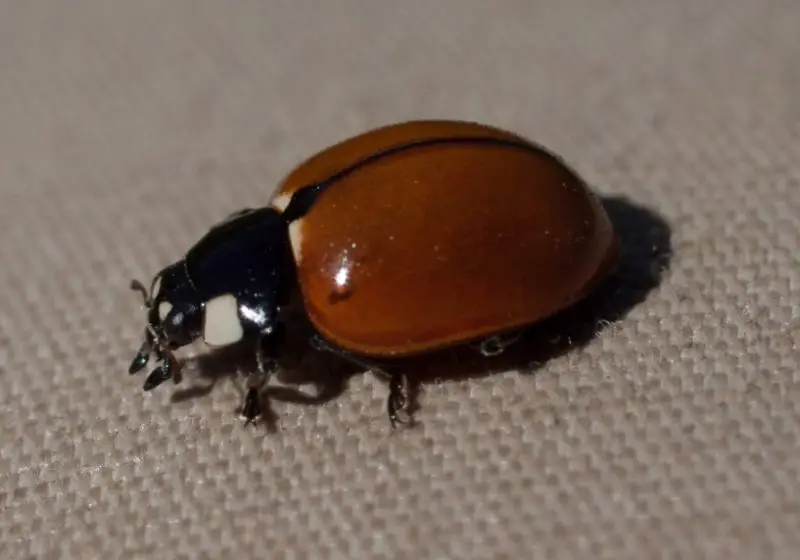
The California Lady Beetle is a native species known for its deep red coloration and clean, spot-free appearance. Unlike many other ladybugs, its elytra are usually unmarked, giving it a sleek and uniform look. Adults measure around 6 millimeters in length and have a rounded, shiny body. Their pronotum is black with two small white patches near the head, a common feature in the Coccinella genus.
This species is found throughout California, especially in coastal regions, grasslands, and foothill areas. It thrives in habitats where aphid populations are high, such as on milkweed, thistle, and other flowering plants. The California Lady Beetle prefers sunny environments and is often seen during spring and early summer when insect prey is most abundant.
In terms of diet, both larvae and adults feed heavily on aphids, soft scales, and other small plant-feeding insects. They are important biological control agents in native ecosystems. The California Lady Beetle is completely harmless to humans and pets and poses no toxic risk. Its native status and natural predatory habits make it a key contributor to California’s ecological balance.
Two-Spotted Lady Beetle (Adalia bipunctata)
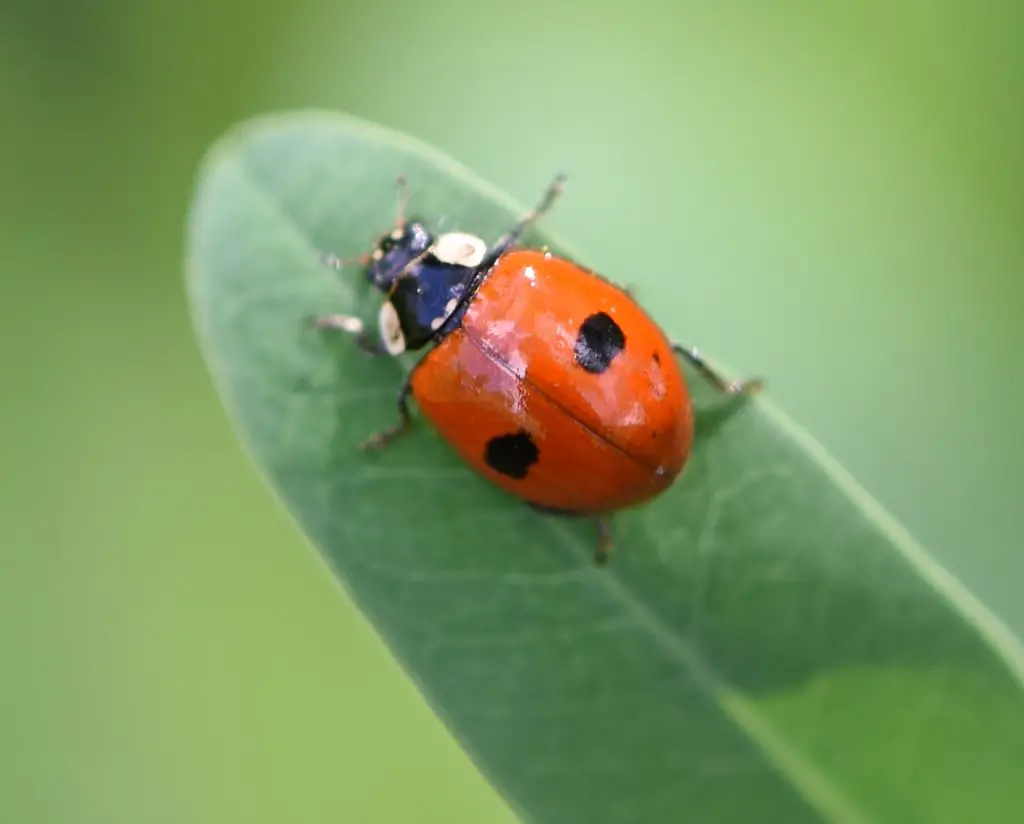
The Two-Spotted Lady Beetle is a small but easily identifiable species known for its bright red or orange elytra with one distinct black spot on each wing cover. The pronotum is black with a white border and two white spots near the head, giving it a characteristic face-like appearance. Adults typically reach about 4 to 5 millimeters in length and have a smooth, rounded shell.
This species inhabits a wide variety of environments, including gardens, orchards, parks, and forest edges across California. It is particularly abundant in areas with rich vegetation and high aphid density. The Two-Spotted Lady Beetle is active during warm months and tends to hibernate in sheltered areas during the winter. Its small size allows it to hide effectively among leaves and bark crevices.
Like other ladybugs, it feeds mainly on aphids but will also consume mites, scale insects, and insect eggs. Its larvae are equally effective predators, making it a valuable ally in maintaining pest-free plants. The Two-Spotted Lady Beetle is non-toxic and does not bite, making it completely harmless to humans. Its bright coloration serves as a natural warning to predators, signaling its unpalatable taste.
Twenty-Spotted Lady Beetle (Psyllobora vigintimaculata)
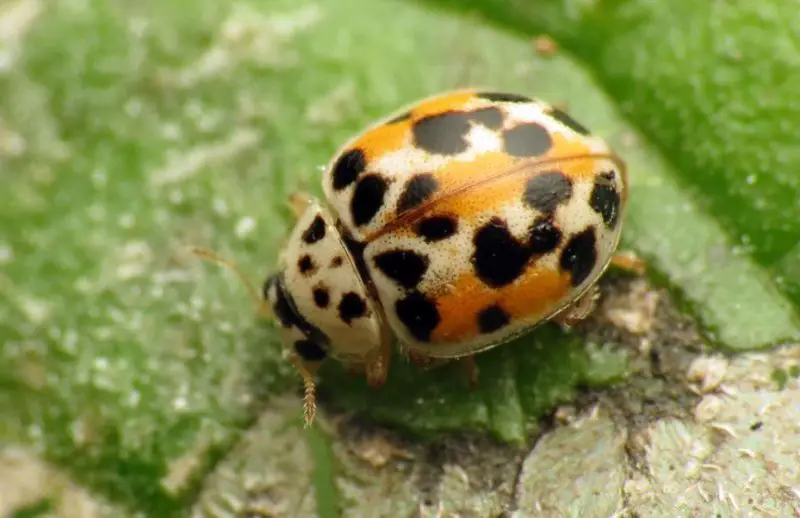
The Twenty-Spotted Lady Beetle is one of California’s most distinctive and smallest ladybugs, measuring only about 2 to 3 millimeters in length. Unlike the typical red or orange ladybugs, this species has a creamy white or pale yellow shell covered with twenty irregular black spots. Its rounded shape and unique color pattern make it easily recognizable among other beetles. Despite its delicate size, it plays an important role in maintaining healthy ecosystems.
This species is commonly found in woodlands, gardens, and fields across California, especially in areas where powdery mildew fungi grow. Unlike most ladybugs that feed on aphids or scale insects, the Twenty-Spotted Lady Beetle feeds primarily on fungal spores and hyphae. This unusual diet makes it a beneficial insect for controlling mildew on plants and crops. They are active during the warmer months and often rest on the undersides of leaves.
The Twenty-Spotted Lady Beetle is harmless to humans, pets, and plants. It is not toxic or aggressive and poses no health risk. Because of its fungal-based diet, it is considered a friend to gardeners, helping to manage mildew naturally. Its tiny size and gentle feeding habits make it one of the most unique ladybugs found in California.
Thirteen-Spotted Lady Beetle (Hippodamia tredecimpunctata)
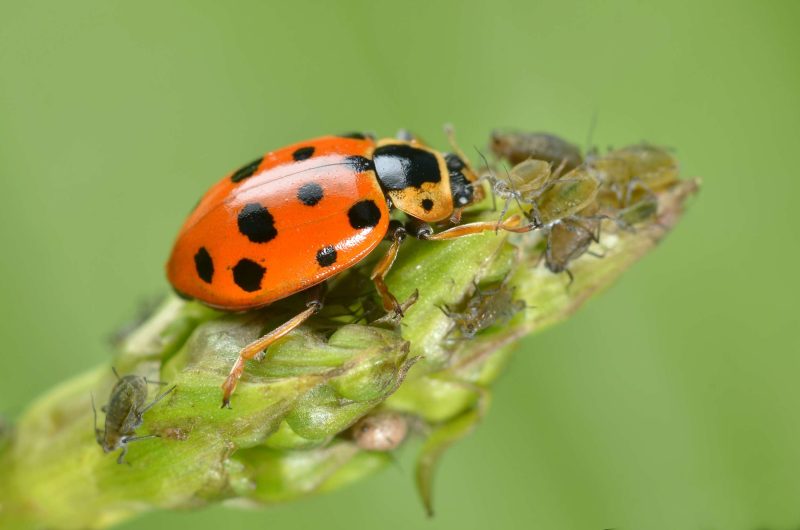
The Thirteen-Spotted Lady Beetle is a medium-sized beetle that measures between 5 and 7 millimeters long. Its bright red or orange elytra feature thirteen distinct black spots, evenly distributed across both wings. The pronotum is black with two small white markings near the head, a common trait within the Hippodamia genus. Its oval and slightly elongated shape distinguishes it from rounder species like the Seven-Spotted Lady Beetle.
In California, this species is often seen in wetland areas, grassy fields, and near agricultural crops. It prefers habitats with abundant aphid colonies, particularly along rivers, irrigation ditches, and meadowlands. The Thirteen-Spotted Lady Beetle is active during spring and summer when temperatures are warm, and it seeks shelter in vegetation during cooler seasons. Its adaptability allows it to thrive in both wild and cultivated environments.
This ladybug is a voracious predator of aphids, mealybugs, and soft-bodied larvae. Both adults and larvae consume large numbers of pests, making them important for natural pest control in crops. The Thirteen-Spotted Lady Beetle is non-toxic to humans and pets and does not bite. Its presence indicates a healthy ecosystem where natural balance between pests and predators is maintained.
Nine-Spotted Lady Beetle (Coccinella novemnotata)
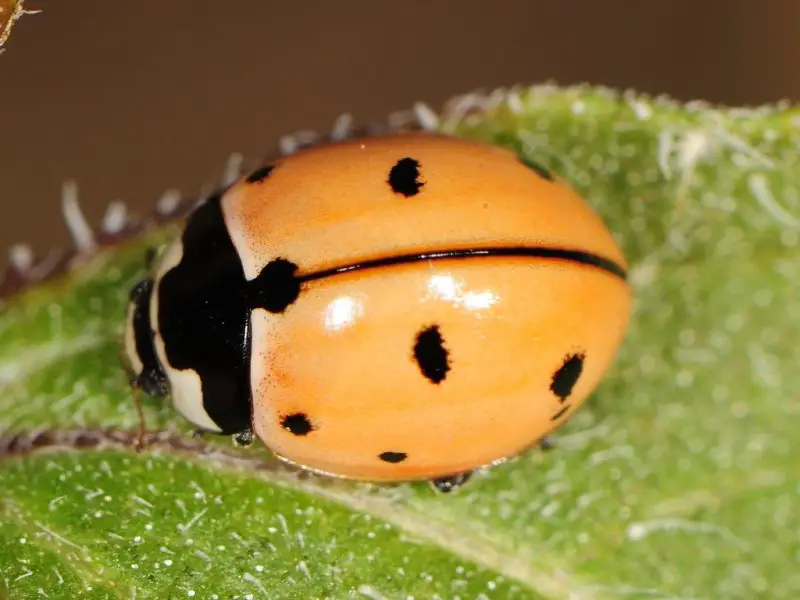
The Nine-Spotted Lady Beetle is a rare but historically important native species in California. Adults measure about 5 to 6 millimeters in length and have bright orange or red elytra with nine distinct black spots—four on each wing and one at the center near the line where the wings meet. The pronotum is black with two white patches near the eyes, giving it a characteristic contrast in color.
Once common across North America, the Nine-Spotted Lady Beetle has declined in population due to habitat loss and competition from introduced species such as the Seven-Spotted and Asian Lady Beetles. In California, it is occasionally found in grasslands, meadows, and agricultural areas where pesticide use is limited. The species prefers warm, open environments with plentiful aphids, which are its main food source.
This ladybug feeds primarily on aphids, but it also eats other small plant pests like mites and insect eggs. Both adults and larvae are beneficial predators. The Nine-Spotted Lady Beetle is completely harmless to humans and non-toxic, making it an excellent natural ally in pest management. Conservation efforts continue to support its reappearance in native habitats across the western states.
Transverse Lady Beetle (Coccinella transversoguttata)
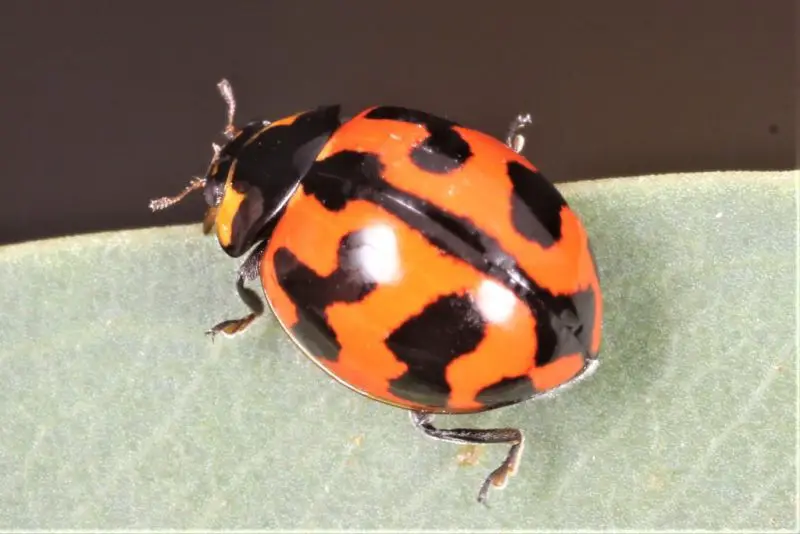
The Transverse Lady Beetle is easily recognized by the black horizontal bands—or transverse marks—across its bright red or orange wing covers. Each elytron has two or three elongated black markings that sometimes merge into larger blotches, giving the species a distinctive pattern unlike other spotted ladybugs. Adults are typically 6 to 7 millimeters in length and have a glossy, rounded body.
Native to North America, this species inhabits meadows, gardens, forests, and croplands throughout California. It thrives in areas with abundant vegetation and insect populations, particularly in regions where aphids infest crops like alfalfa and clover. The Transverse Lady Beetle is active during warm months and can survive mild winters by hiding in plant debris or under bark.
As a predator, it primarily feeds on aphids but also consumes leafhoppers, mealybugs, and scale insects. Its larvae are equally effective hunters and contribute significantly to natural pest control. This species is completely harmless to humans and animals. It does not produce toxins or bite, making it one of the many beneficial ladybugs vital to California’s ecosystem.
Parenthesis Lady Beetle (Hippodamia parenthesis)
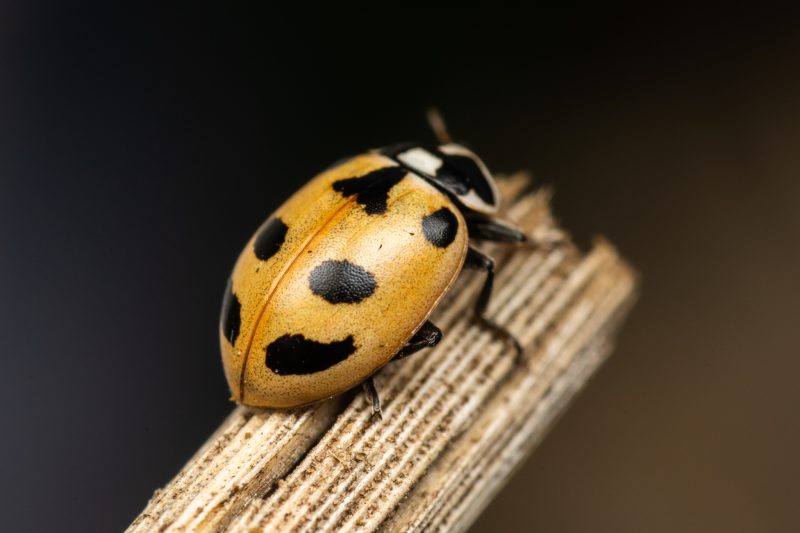
The Parenthesis Lady Beetle gets its name from the curved black markings on its wings, which resemble parentheses “( )”. Its body is oval-shaped and ranges from 4 to 6 millimeters in length, with bright orange-red elytra featuring several dark, curved spots. The pronotum is black with two white patches near the head, and its overall shape is slightly elongated compared to more rounded species.
This ladybug is widespread across California and can be found in a variety of habitats, including grasslands, gardens, and agricultural fields. It is particularly common on plants infested with aphids, where both adults and larvae feed extensively. The Parenthesis Lady Beetle is highly adaptable and can tolerate different climates and altitudes, from coastal regions to inland valleys and mountain foothills.
In terms of diet, this species preys on aphids, whiteflies, and other small insects that damage plants. It is highly beneficial to gardeners and farmers, reducing the need for chemical pest control. The Parenthesis Lady Beetle is non-toxic and harmless to humans, pets, and crops. Its bright coloration and gentle nature make it a welcome sight in any garden or natural habitat.
Ashy Gray Lady Beetle (Olla v-nigrum)
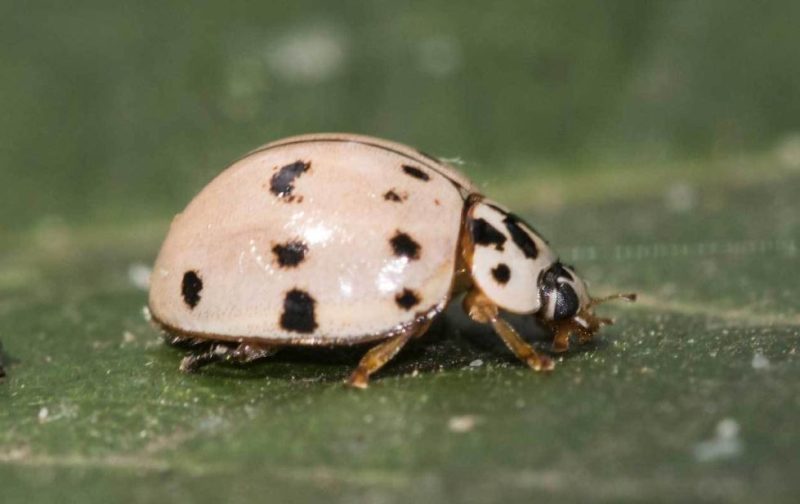
The Ashy Gray Lady Beetle is one of the most distinctive ladybugs in California due to its unique coloration. Adults measure around 5 to 7 millimeters long and come in two main color forms: a pale gray or silver-gray form covered with irregular black spots, and a shiny black form with two red spots on each elytron. Its pronotum is typically black with white edges, and its body has a slightly elongated oval shape, distinguishing it from rounder species like the Seven-Spotted Lady Beetle.
This ladybug is common throughout California, especially in orchards, gardens, and agricultural areas where aphids and other pests thrive. It adapts well to both dry inland valleys and humid coastal regions. During colder months, the Ashy Gray Lady Beetle seeks shelter under bark, leaf litter, or rocks to overwinter. It becomes active again in spring, when pest populations begin to rise.
As a predator, this species feeds primarily on aphids, mealybugs, and small insect larvae. Both larvae and adults are beneficial for controlling agricultural pests. The Ashy Gray Lady Beetle is non-toxic and harmless to humans and animals. Its unusual gray form often leads people to mistake it for a different beetle species, but it remains one of California’s most effective natural pest controllers.
Spotless Lady Beetle (Cycloneda sanguinea)
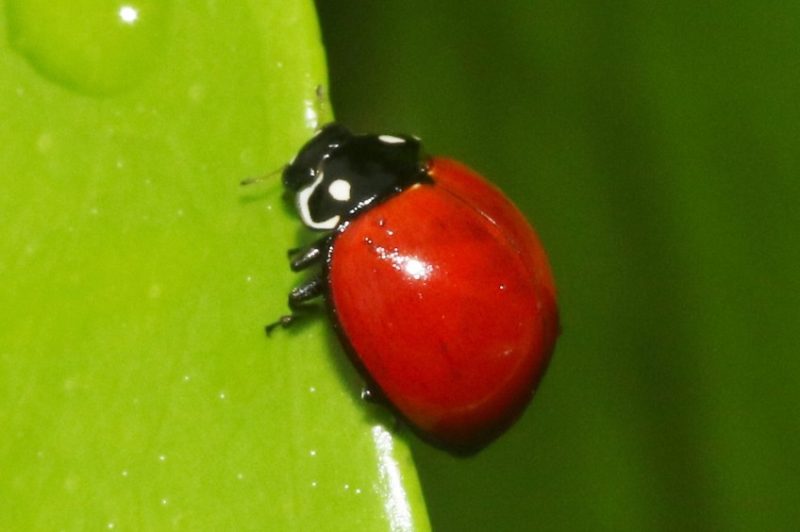
The Spotless Lady Beetle stands out for its smooth, bright red or orange elytra that completely lack black spots—hence its name. Adults measure between 5 and 8 millimeters in length and have a glossy, dome-shaped body. The pronotum is black with two white crescent-shaped patches near the head, giving it a clean, striking appearance. This spotless beauty is one of the easiest ladybugs to recognize in California.
This species is widely distributed across the state, thriving in warm and open habitats such as grasslands, gardens, and crop fields. It is especially common in areas where aphids colonize milkweed, citrus trees, and ornamental plants. The Spotless Lady Beetle prefers sunny environments and can often be seen flying or resting on flower petals and leaves during the spring and summer months.
A highly beneficial predator, the Spotless Lady Beetle feeds on aphids, scale insects, and small larvae. Both adults and larvae play a crucial role in pest control. It is harmless and non-toxic, posing no risk to humans or pets. Its brilliant coloration serves as a warning to predators that it tastes unpleasant, a common defense mechanism among ladybugs. This elegant, spotless beetle is a welcome guest in any garden.
Fourteen-Spotted Lady Beetle (Propylea quatuordecimpunctata)
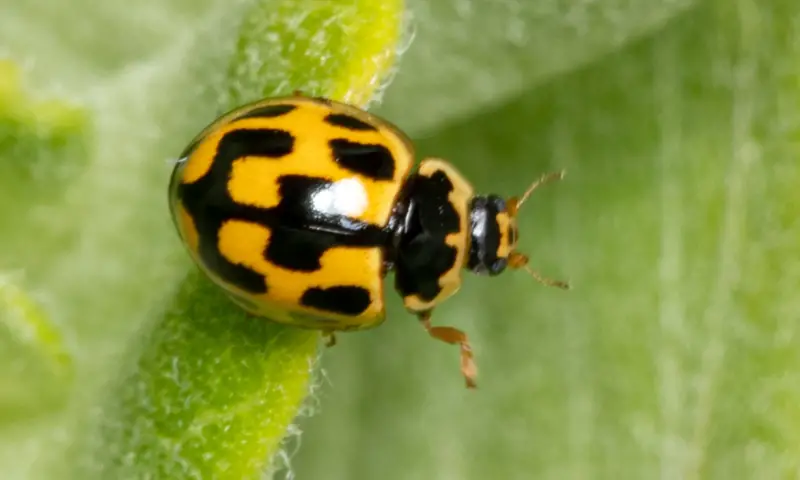
The Fourteen-Spotted Lady Beetle is a small, yellow to pale orange beetle measuring about 3.5 to 4.5 millimeters long. It features fourteen black rectangular spots that may merge into complex patterns on its wing covers, sometimes forming stripes or cross-like shapes. Its pronotum is pale with dark markings, and its compact, rounded body gives it a distinctive appearance among other California ladybugs.
Originally native to Europe, this species has spread across North America and can now be found in various regions of California. It prefers meadows, agricultural lands, and gardens where aphid populations are high. The Fourteen-Spotted Lady Beetle thrives in temperate climates and is often seen on crops such as alfalfa, wheat, and corn. It is an active flyer and can migrate short distances in search of food sources.
This ladybug is a voracious predator of aphids, whiteflies, and other small pests. Its larvae are just as effective, consuming numerous aphids daily. The Fourteen-Spotted Lady Beetle is harmless to humans and pets and does not release unpleasant odors like some other species. It contributes significantly to maintaining pest balance in natural and cultivated ecosystems, making it an important part of California’s biodiversity.
Three-Banded Lady Beetle (Coccinella trifasciata)
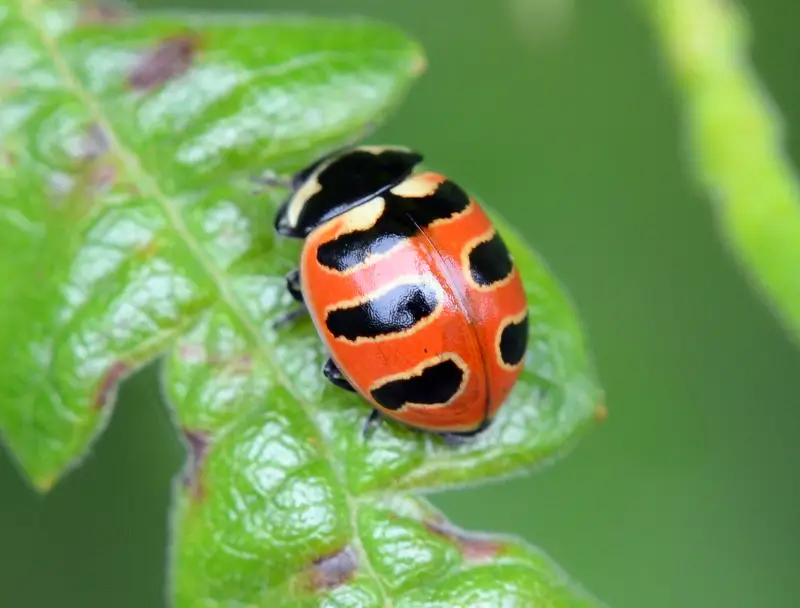
The Three-Banded Lady Beetle is a rare and eye-catching species known for its distinctive pattern of three black transverse bands across its red or orange elytra. Adults measure between 5 and 6 millimeters in length, with a glossy, rounded shell. The pronotum is black with two small white spots near the head, a common feature in the Coccinella genus. Its unique banded markings make it one of the most visually striking ladybugs found in California.
This species is typically found in grasslands, meadows, and agricultural regions where aphids are abundant. It thrives in moderate climates and is active mainly during spring and summer. The Three-Banded Lady Beetle prefers open habitats with a good supply of flowering plants, which attract its insect prey. It is sometimes found near water sources or in irrigated croplands.
As an efficient predator, it feeds on aphids, mealybugs, and other soft-bodied insects that damage crops. Both larvae and adults contribute to pest control in natural ecosystems and agricultural settings. The Three-Banded Lady Beetle is non-toxic and safe for humans and pets. Though uncommon, it plays a valuable role in maintaining ecological balance and is considered one of the more beneficial ladybug species in California.
Fifteen-Spotted Lady Beetle (Anatis labiculata)
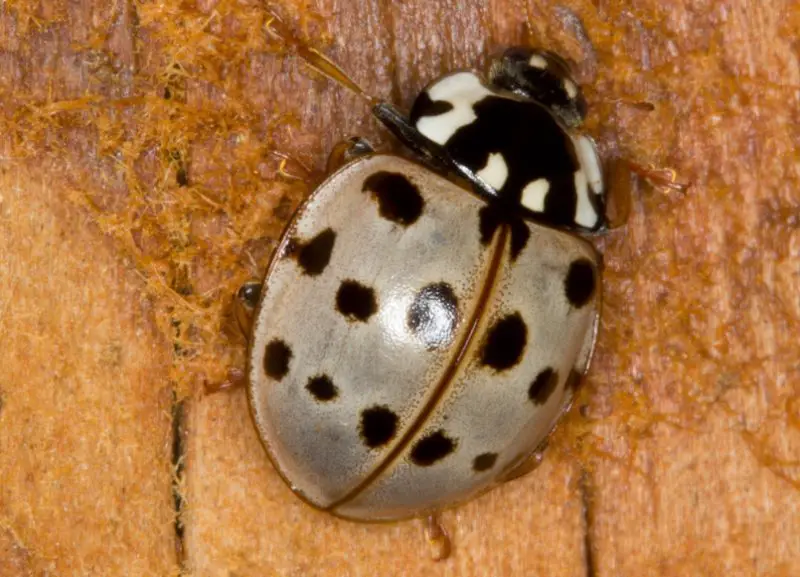
The Fifteen-Spotted Lady Beetle is one of the larger and more distinctive ladybugs found in California. Adults typically measure 7 to 9 millimeters in length and have creamy white or light tan elytra covered with fifteen bold black spots. Its pronotum is also pale with symmetrical black markings, and its body has a slightly elongated oval shape. This striking pattern gives the beetle a soft, mottled appearance that sets it apart from other ladybug species.
This species prefers forested areas, wooded edges, and places with abundant vegetation. It can be found resting on trees, shrubs, and flowering plants throughout California’s mountain and foothill regions. The Fifteen-Spotted Lady Beetle is more active in cooler, moist environments and is often seen during the early summer months. During winter, it shelters in bark crevices and leaf litter to survive cold conditions.
The Fifteen-Spotted Lady Beetle primarily feeds on aphids, adelgids, and scale insects that infest trees and shrubs. Its predatory behavior helps control pest populations in forest ecosystems. This species is non-toxic and poses no harm to humans or animals. Due to its size, unusual coloration, and beneficial feeding habits, it is considered one of the more fascinating and ecologically valuable ladybugs native to California.
Variegated Lady Beetle (Hippodamia variegata)
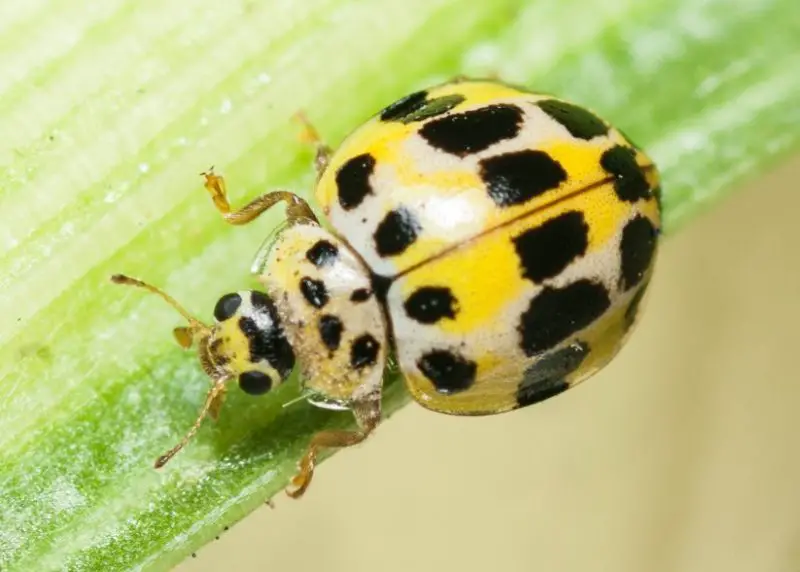
The Variegated Lady Beetle is a medium-sized species, measuring between 4 and 6 millimeters long. Its coloration is highly variable—ranging from red to orange or even yellow—with a series of black spots that differ from one individual to another. The pronotum is black with two pale lateral patches, giving the beetle a slightly marbled appearance. Its elongated oval shape and smooth, glossy shell make it easy to distinguish from rounder ladybug species.
Native to Europe and Asia, this species has successfully established populations throughout California, especially in agricultural areas, grasslands, and urban gardens. It prefers habitats rich in aphid populations and thrives in sunny, open areas with flowering plants. The Variegated Lady Beetle is active during spring and summer and can tolerate California’s dry conditions well. In winter, it often hides under bark, leaf litter, or rocks to avoid cold temperatures.
This ladybug is an excellent predator of aphids, thrips, and whiteflies. Both larvae and adults are highly effective in controlling pest infestations, particularly in vegetable gardens and orchards. The Variegated Lady Beetle is harmless and non-toxic, posing no risk to humans or pets. Its adaptability and strong predatory instincts make it one of the most beneficial non-native ladybugs in California.
Polished Lady Beetle (Cycloneda munda)
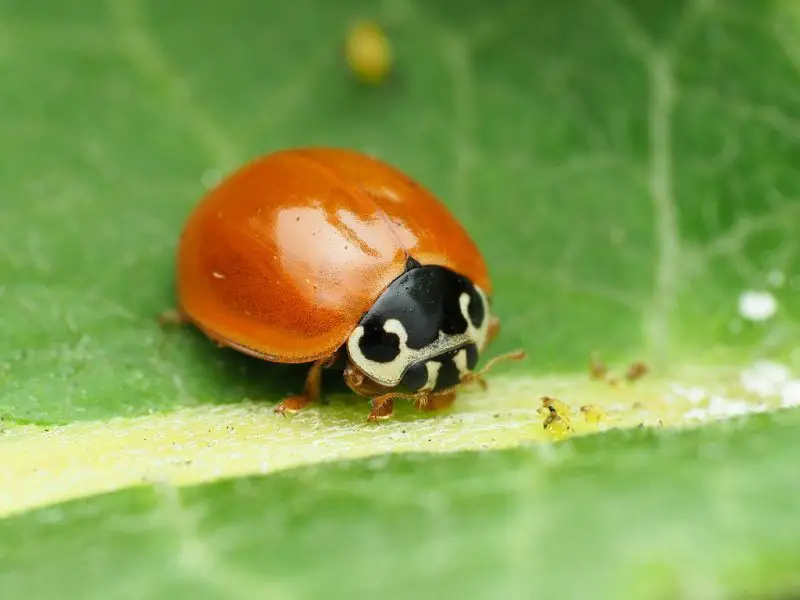
The Polished Lady Beetle is one of the most visually appealing species found in California. True to its name, it has a smooth, shiny surface with a bright red or orange hue and no black spots on the elytra. The pronotum is black with two white patches near the head, creating a distinctive facial pattern. Adults measure between 5 and 6 millimeters in length, with a dome-shaped body that glistens in the sunlight.
This species prefers habitats with abundant flowering plants and aphid populations. It is commonly seen in gardens, meadows, and along woodland edges throughout California. The Polished Lady Beetle is active in warm months and overwinters in sheltered areas like bark crevices or under leaves. Its preference for sunny, open spaces makes it a frequent sight in natural and agricultural landscapes.
The Polished Lady Beetle feeds on aphids, scale insects, and small insect larvae, contributing to natural pest control. Both adults and larvae are active hunters, moving quickly to locate food. This species is completely harmless to humans and pets and does not release any foul-smelling defensive fluids. Its clean, glossy look and beneficial feeding habits make it a favorite among gardeners and naturalists alike.
Glacial Lady Beetle (Hippodamia glacialis)
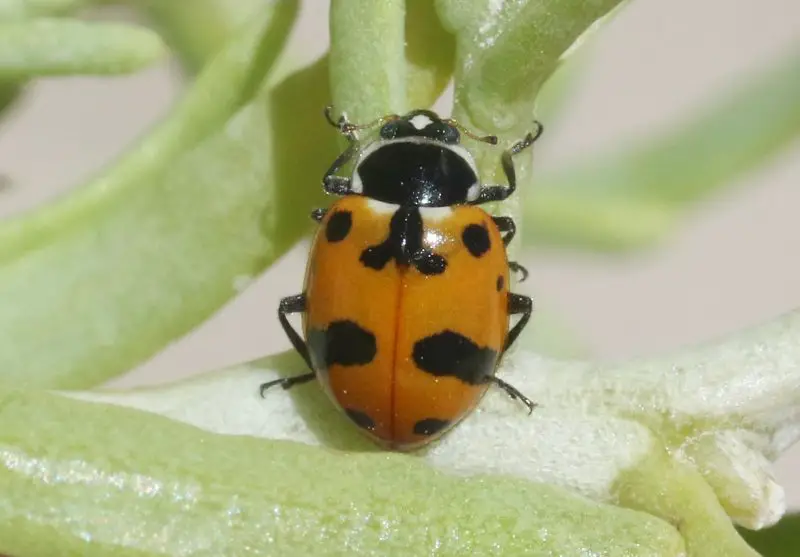
The Glacial Lady Beetle is a striking species characterized by its variable coloration and patterning. Adults are typically 5 to 7 millimeters long, with red or orange elytra marked by several black spots that may merge or vary in size. Its pronotum is black with white or yellow edges, and its body is elongated compared to more rounded ladybug types. The color and pattern variation can make identification tricky, but its shape and habitat preferences are distinctive.
This species is native to North America and found throughout California, especially in cooler mountain and foothill regions. It thrives in coniferous forests, grasslands, and alpine meadows where temperatures are moderate. The Glacial Lady Beetle is active during spring and early summer and prefers areas with abundant aphid populations on shrubs and low vegetation. It hibernates under leaf litter or bark during the colder months.
The Glacial Lady Beetle preys primarily on aphids and soft-bodied insect pests, playing a key role in regulating pest populations in natural ecosystems. It is harmless to humans, non-toxic, and does not bite. Its tolerance to cool climates and adaptability to different environments make it an important species for pest control in higher elevations of California.
Eye-Spotted Lady Beetle (Anatis ocellata)
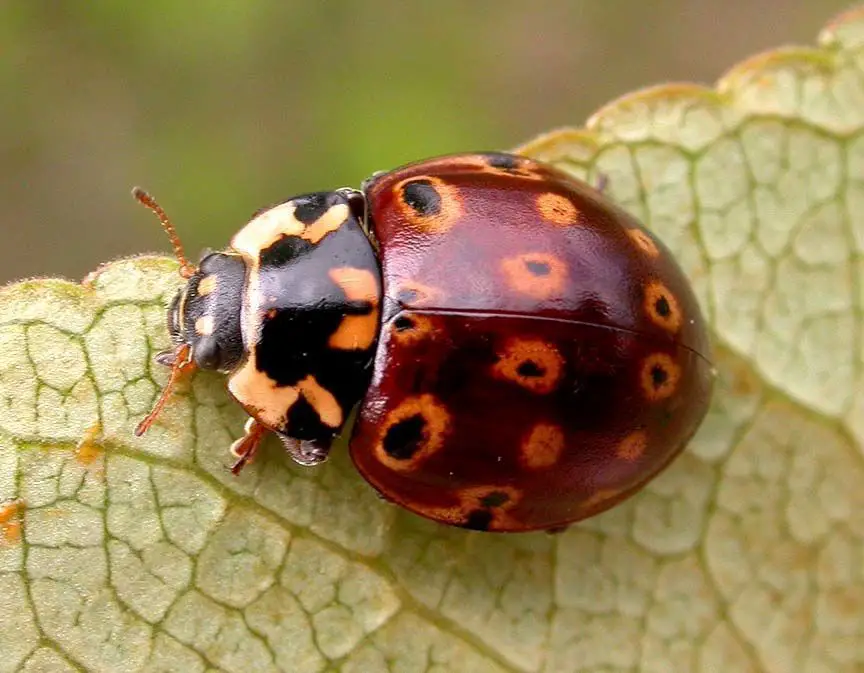
The Eye-Spotted Lady Beetle is one of the most distinctive and easily recognized species in California. It measures between 7 and 10 millimeters in length, making it one of the larger ladybugs in the region. Its orange or red elytra are decorated with large black spots, each surrounded by a pale yellow ring resembling an eye—hence its common name. The pronotum is pale with dark markings, and its oval body is slightly flattened compared to rounder species.
This species prefers wooded and forested habitats, particularly in cooler mountainous regions of California. It can be found on coniferous trees, shrubs, and even tall grasses where aphids and scale insects are abundant. The Eye-Spotted Lady Beetle is most active during spring and summer and seeks shelter under bark or leaf litter during the winter months. It plays a key role in maintaining pest balance in forest ecosystems.
The Eye-Spotted Lady Beetle feeds primarily on aphids, adelgids, and small larvae. Both adults and larvae are voracious predators and highly beneficial to plants and trees. It is harmless to humans and non-toxic, though it may excrete a mild yellow fluid when disturbed as a defense mechanism. Its large size, unique markings, and beneficial feeding habits make it one of the most fascinating ladybug species in California.
Twice-Stabbed Lady Beetle (Chilocorus stigma)
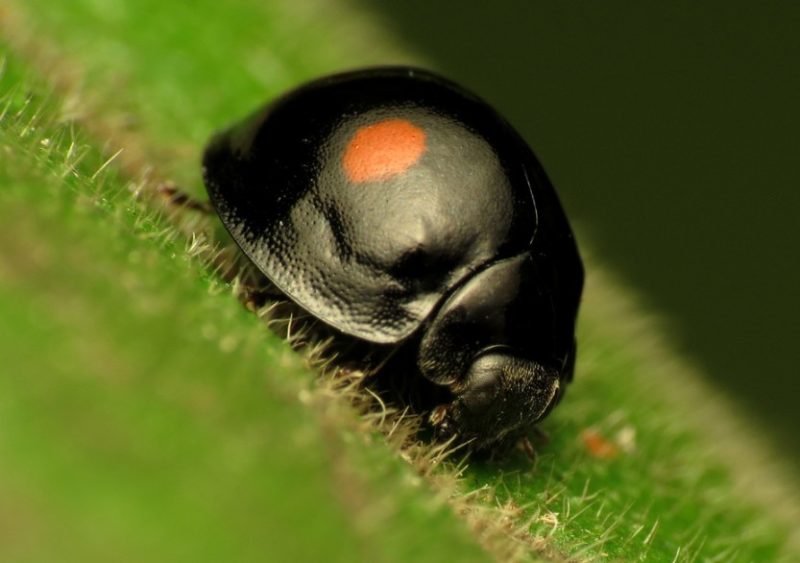
The Twice-Stabbed Lady Beetle is a small but striking species recognized by its glossy black body with two bright red spots—one on each elytron. Adults measure around 4 to 5 millimeters in length and have a dome-shaped, shiny shell that almost looks polished. Its pronotum is black, and its body is compact and rounded, giving it a characteristic “button-like” appearance. The contrasting black and red coloration serves as a warning to predators.
This species is widespread across California and is most commonly found in wooded areas, orchards, and gardens. It prefers habitats where scale insects and mealybugs are abundant, often living on tree bark or leaves. The Twice-Stabbed Lady Beetle can be active throughout the year in warmer regions and is known to survive mild winters by hiding under bark or leaf debris.
A specialist predator, it primarily feeds on scale insects and other plant pests that infest trees and shrubs. Both larvae and adults contribute significantly to natural pest control, particularly in orchards and forested areas. The Twice-Stabbed Lady Beetle is harmless to humans and pets and non-toxic. Its small size and distinctive coloration make it one of the most recognizable and beneficial ladybugs in California’s ecosystem.
Tips for Identifying and Attracting Ladybugs in California
Observe Color and Spot Patterns
Ladybugs in California come in a variety of colors, including red, orange, yellow, gray, and even black. The number and arrangement of spots can help you identify the species. For instance, the Convergent Lady Beetle has two converging white lines on its pronotum, while the Twice-Stabbed Lady Beetle displays only two bold red spots on a black body. Noting these differences is key to accurate identification.
Provide a Suitable Habitat
To attract ladybugs, maintain a garden rich in flowering plants such as dill, marigold, fennel, and yarrow. These plants produce nectar and pollen that adult ladybugs enjoy while also attracting aphids, which serve as their main food source. Avoid using chemical pesticides that can harm both ladybugs and their prey populations, disrupting the natural pest control balance.
Encourage Overwintering
Ladybugs often seek shelter during cooler months. You can help them by leaving some leaf litter, mulch, or bark piles undisturbed through the winter. This provides them with safe spaces to overwinter and return in the spring. A healthy, pesticide-free environment encourages them to reproduce and naturally control garden pests year after year.
FAQs about Ladybugs in California
What do ladybugs eat?
Ladybugs primarily eat aphids, but they also consume other soft-bodied insects such as mealybugs, mites, and whiteflies. Some species, like the Twenty-Spotted Lady Beetle, feed on fungal spores instead of insects. Both larvae and adults are beneficial predators that help keep pest populations under control.
Are ladybugs harmful to humans or pets?
No, ladybugs are not harmful to humans or pets. They do not bite, sting, or carry diseases. However, some species, such as the Asian Lady Beetle, can release a yellow, foul-smelling fluid when disturbed. This fluid is harmless but may stain surfaces or irritate sensitive skin slightly.
Why do some ladybugs come indoors?
During fall and winter, certain species, particularly the Asian Lady Beetle, seek warm places to overwinter. Homes, attics, and window frames often provide ideal shelter. While this behavior can be annoying, it is harmless. Gently removing or vacuuming them without crushing prevents odor and mess.
How can I attract ladybugs to my garden?
You can attract ladybugs by planting nectar-rich flowers and avoiding chemical insecticides. Providing food sources like aphids and sheltering areas such as small shrubs and ground cover encourages them to stay and breed. Purchasing live ladybugs for release can also help establish a beneficial population in your garden.
Are all ladybugs red with black spots?
No, ladybugs display a wide range of colors and patterns. Some, like the Spotless Lady Beetle, have no spots at all, while others, such as the Fourteen-Spotted Lady Beetle, have yellow bodies with black markings. Their diversity makes them both fascinating and useful for natural pest control in California’s varied environments.

